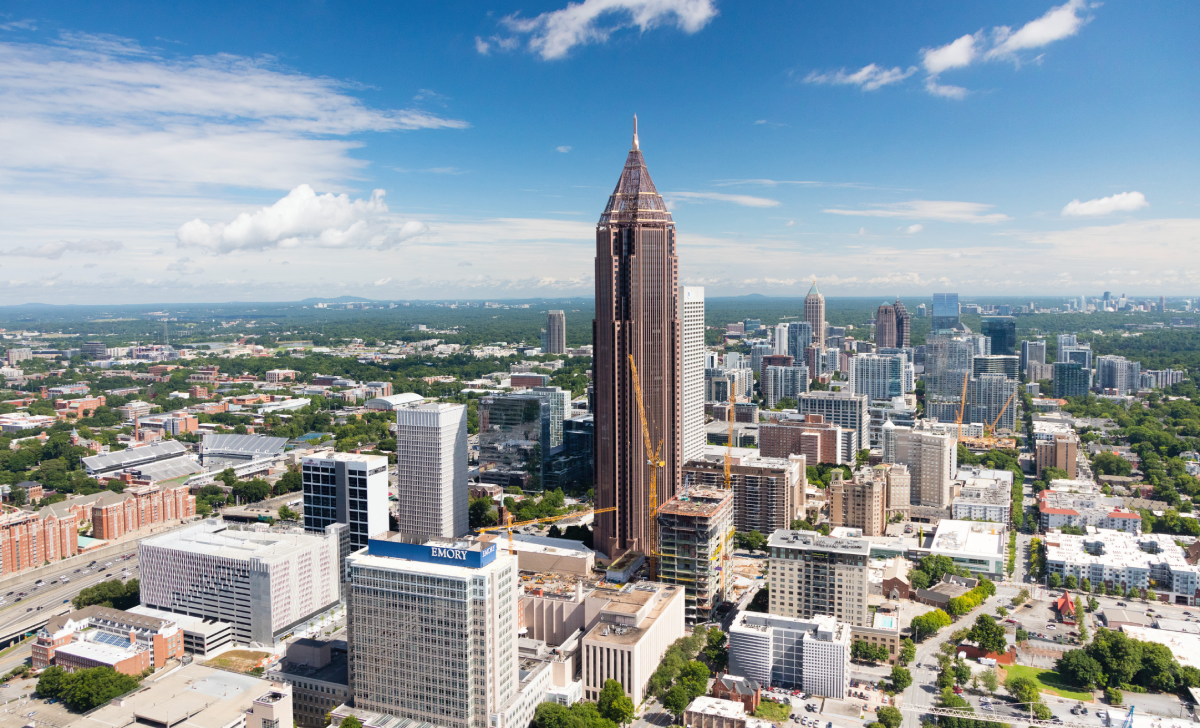From its humble beginnings as a railroad hub in the post-Civil War era to a bustling metropolis hosting the 2026 FIFA World Cup, Atlanta’s skyline has long mirrored the city’s relentless reinvention.
As of this moment, Georgia’s largest city is poised to add its tallest building in three decades. But you may wonder how high the city’s steel canopy goes?
Top 10 Tallest Buildings in Atlanta
Here is a list of the 10 tallest buildings in Atlanta, based on architectural height (including spires but excluding antennas).
| Rank | Building Name | Height (ft / m) | Floors | Year Completed | Primary Function |
|---|---|---|---|---|---|
| 1 | Bank of America Plaza | 1,023 / 311.8 | 55 | 1992 | Office |
| 2 | Truist Plaza | 867 / 264.3 | 60 | 1992 | Office |
| 3 | One Atlantic Center | 820 / 249.9 | 50 | 1987 | Office |
| 4 | 191 Peachtree Tower | 770 / 234.7 | 50 | 1992 | Office |
| 5 | Westin Peachtree Plaza Hotel | 723 / 220.4 | 73 | 1976 | Hotel |
| 6 | Georgia Pacific Tower | 697 / 212.5 | 51 | 1981 | Office |
| 7 | Promenade II | 691 / 210.6 | 40 | 1989 | Office |
| 8 | Tower Square | 677 / 206.4 | 47 | 1980 | Office |
| 9 | 3344 Peachtree | 665 / 202.7 | 48 | 2008 | Mixed-use |
| 10 | 1180 Peachtree | 657 / 200.2 | 41 | 2006 | Office |
What was once a modest cluster of low-rise structures scarred by the fires of 1864 has evolved into a dynamic mosaic of glass spires and stone-clad towers, symbolizing economic ambition, cultural resurgence, and urban innovation.
As construction cranes pierce the Georgia sky once more, the Peach State’s capital is on the cusp of its most significant architectural renaissance in over three decades, with new mixed-use behemoths promising to redefine its silhouette.
The Roots of a Rising City: Early 1900s
Atlanta’s vertical journey began tentatively in the late 19th century.
The Flatiron Building (now the English-American Building), completed in 1897, holds the distinction of being the city’s oldest surviving skyscraper.
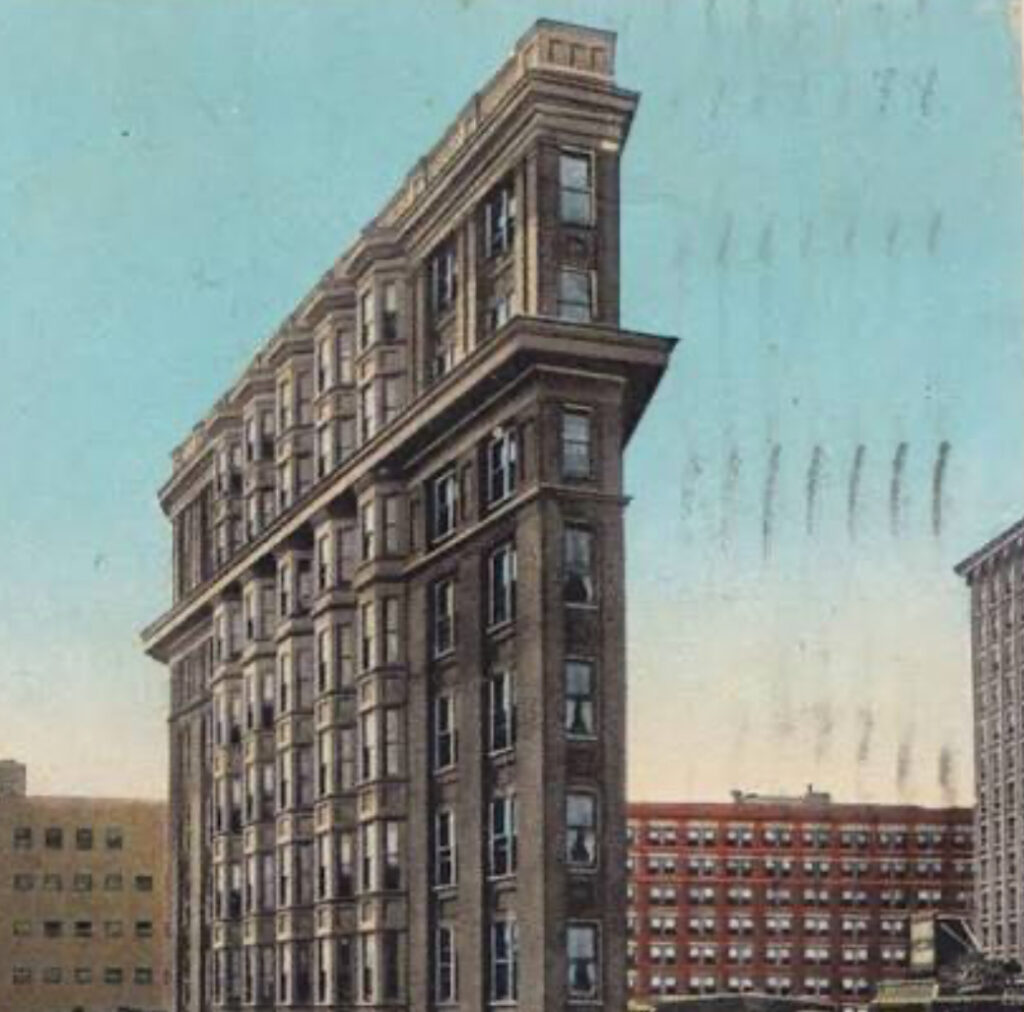
Pictured: FlatIron Building in downtown Atlanta.
At just 11 stories and 87 meters tall, its wedge-shaped form—echoing New York’s more famous counterpart, built five years later—marked a bold statement amid the ruins of war.
This era of modest growth persisted until the 1960s, when the skyline began its ascent with towers like the 28-story One Park Tower.
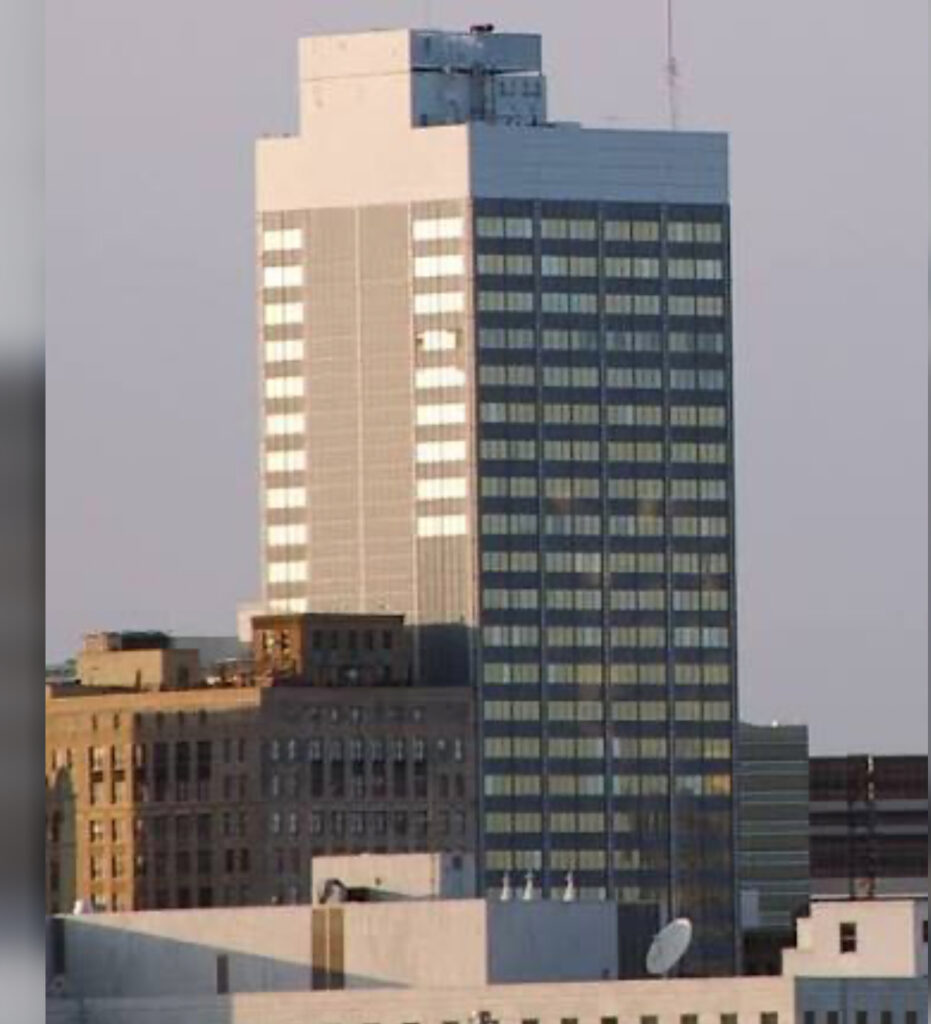
One Park Tower in Atlanta.
1970s-1980s: Atlanta Emerges As Southern Juggernaut
The 1970s and 1980s brought explosive change, fueled by Atlanta’s emergence as a Southern economic powerhouse.
Architect John Portman’s visionary designs dominated: the iconic Westin Peachtree Plaza Hotel (1976), a 73-story, 723-foot cylindrical marvel with a revolving restaurant atop its gold-domed crown, briefly claimed the title of the Western Hemisphere’s tallest hotel.
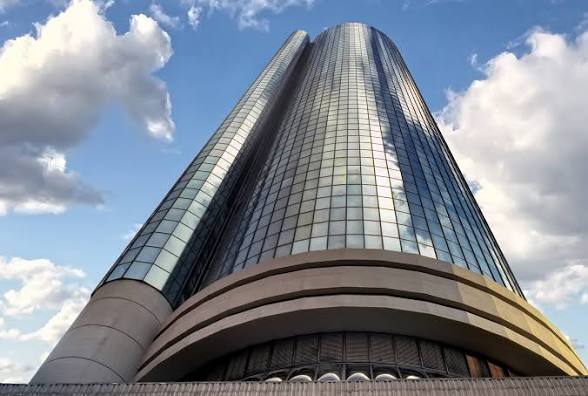
Pictured: Westin Peachtree Plaza Hotel in Atlanta.
Nearby, the Georgia-Pacific Tower (1981), a 51-story granite-clad office giant, anchored Downtown’s growing business district.
These structures, blending Brutalist and Modernist influences, transformed Peachtree Street into a corridor of ambition.
The 1990s: Ambition, Opulence
The 1990s boom cemented Atlanta’s status. Four of the city’s tallest buildings rose that decade, culminating in 1992 with the Bank of America Plaza (1,023 feet, 55 stories), the Southeast’s supertall icon featuring a Postmodern spire that glows green at night.
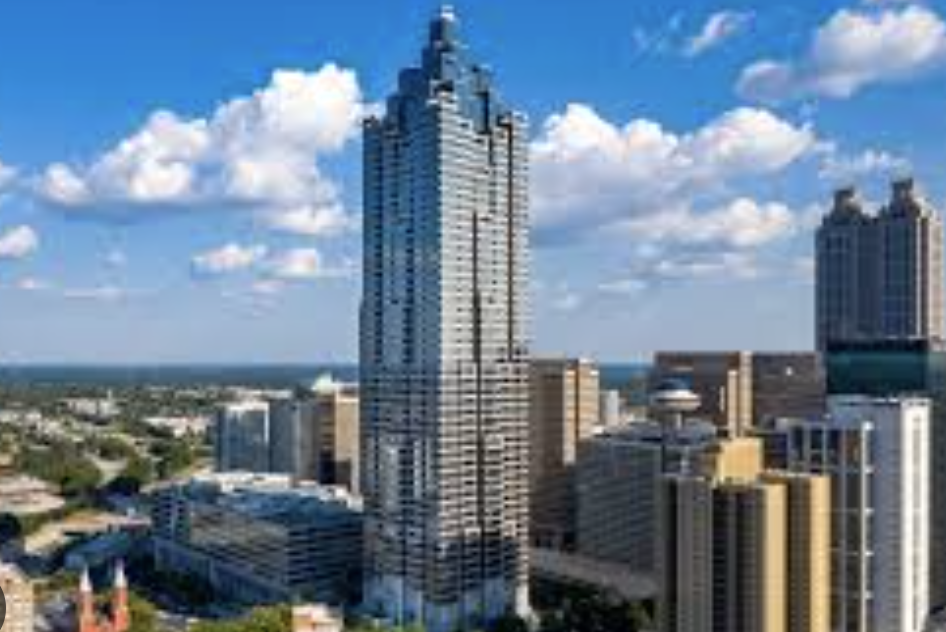
Pictured: Truist Plaza in Atlanta.
Flanking it were the 60-story Truist Plaza (867 feet), with its pink marble facade, and the 50-story *l191 Peachtree Tower (770 feet), a sleek glass obelisk housing legal powerhouses.
Midtown’s One Atlantic Center (820 feet, 1987), often called the IBM Tower for its former anchor tenant, added a copper-capped elegance, while the Equitable Building (1968) exemplified midcentury minimalism with its clean International Style lines.
Final Word
The 2010s and early 2020s tested Atlanta’s grit. Office vacancies soared amid remote work, and population growth strained housing.
Yet, the skyline adapted, shifting toward mixed-use developments along the BeltLine and in emerging districts like West Midtown. Between 2020 and 2024, Midtown and Downtown added dozens of towers, “beefing up” the profile with residential and retail infusions.
More Content From AtlantaFi.com:

